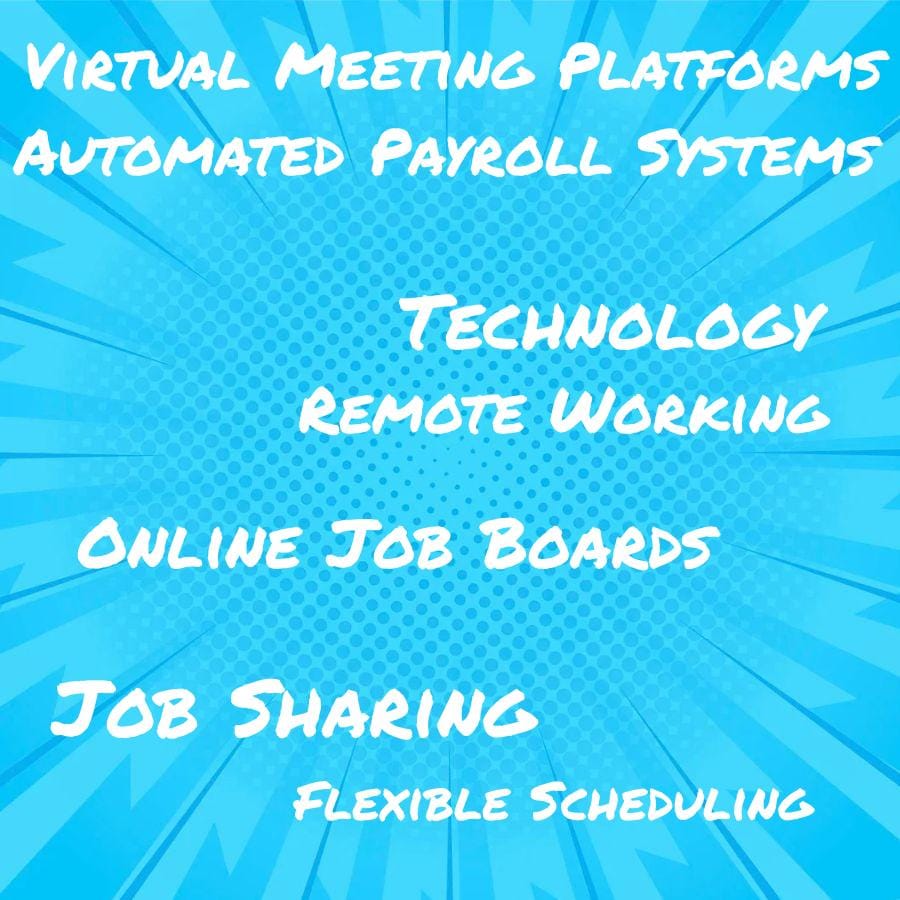Technology can facilitate job sharing arrangements by providing tools to help employees coordinate their schedules, communicate with each other, and share resources. Additionally, technology can provide an automated system for tracking job sharing hours and payments.
Technology has revolutionized the way we work, allowing us to connect with colleagues and employers from around the world. It has also opened up new possibilities for job sharing arrangements, in which two or more people share a single role.
In this blog post, we’ll explore how technology can help facilitate job sharing arrangements and make them more efficient and effective. We’ll look at how technology can be used to streamline communication between job sharers, as well as how it can be used to manage tasks and ensure that everyone is on the same page.
We’ll discuss how technology can help employers create a successful job sharing arrangement that benefits both parties involved.
Online Job Boards

These boards provide a platform for employers and job seekers to connect, making it easier for both parties to find the right fit. By using online job boards, employers can quickly reach out to a large pool of qualified candidates, while potential employees can easily search through available positions in their area or field of interest.
These platforms often offer additional features such as resume building tools and career advice resources which can help facilitate successful job sharing arrangements.
Remote Working Capabilities
This can include working from home, a coffee shop, or any other location with an internet connection. With remote working capabilities, employers can provide their employees with the flexibility to work when and where they want while still having access to all of the necessary tools and resources needed for their job.
Technology such as video conferencing software, cloud-based file sharing systems, and virtual private networks (VPNs) enable teams to collaborate remotely in real time without sacrificing productivity or quality of work. These technologies make it easier for employers to set up job sharing arrangements by allowing multiple people to access the same project simultaneously from different locations.
Flexible Scheduling Options
Technology can provide employees with the ability to easily adjust their work schedules, allowing them to share jobs and responsibilities more effectively. For example, an employee may be able to use a mobile app or website to set their own hours for when they will be available for work.
This allows employers to better accommodate different needs and preferences among workers while still ensuring that tasks are completed in a timely manner. Technology can enable employers and employees alike to track progress on shared tasks and communicate quickly about any changes or updates that need to be made.
By providing flexible scheduling options through technology, job sharing arrangements become much easier for both parties involved.
Virtual Meeting Platforms
They provide a way for job sharing arrangements to be facilitated, as they enable individuals to connect with each other from different locations. With virtual meeting platforms, employers can easily set up meetings between employees who are in different cities or countries.
This makes it easier for them to discuss job responsibilities and tasks, share ideas and resources, and coordinate their efforts without having to physically meet in person. These platforms often offer features such as video conferencing, file sharing capabilities, chat rooms and more which make it easier for teams of people working on the same project or task to stay connected even when they’re not in the same place.
By using virtual meeting platforms, employers can ensure that job sharing arrangements run smoothly while also allowing employees greater flexibility when it comes to their work schedules.
Automated Payroll Systems
These systems allow employers to easily manage the payroll for multiple employees who are working together on a shared job. The system automates the process of calculating wages, taxes, and other deductions for each employee based on their hours worked and rate of pay.
This eliminates the need for manual calculations and paperwork, making it easier to keep track of payments and ensure accuracy in payment amounts. Automated payroll systems also provide an efficient way to transfer funds directly into each employee’s bank account or other payment method, eliminating delays in receiving payments due to manual processing.
By streamlining this process with technology, employers can make sure that all employees involved in a job share arrangement receive their fair share quickly and accurately.
Cloud-based Document Sharing Services
These services allow users to store and share documents online, making it easier for multiple people to access the same files from different locations. This makes it possible for two or more people to collaborate on a project without having to be in the same physical space.
For example, if one person is working remotely, they can still access the same documents as someone who is in the office. Cloud-based document sharing services provide an easy way for teams to keep track of changes made by each member and ensure everyone has up-to-date versions of all documents.
By using these services, job sharing arrangements become much simpler and more efficient than traditional methods such as emailing files back and forth or relying on physical copies of documents.
Communication Tools for Collaboration and Coordination
Technology can facilitate these arrangements by providing communication tools for collaboration and coordination. These tools allow the job sharers to communicate with each other, coordinate their work schedules, and collaborate on tasks that require multiple people.
Examples of such tools include video conferencing software, online project management platforms, shared document editing programs, and instant messaging services. By using these technologies, job sharers can easily stay in touch with each other and ensure that all aspects of the job are completed efficiently and effectively.